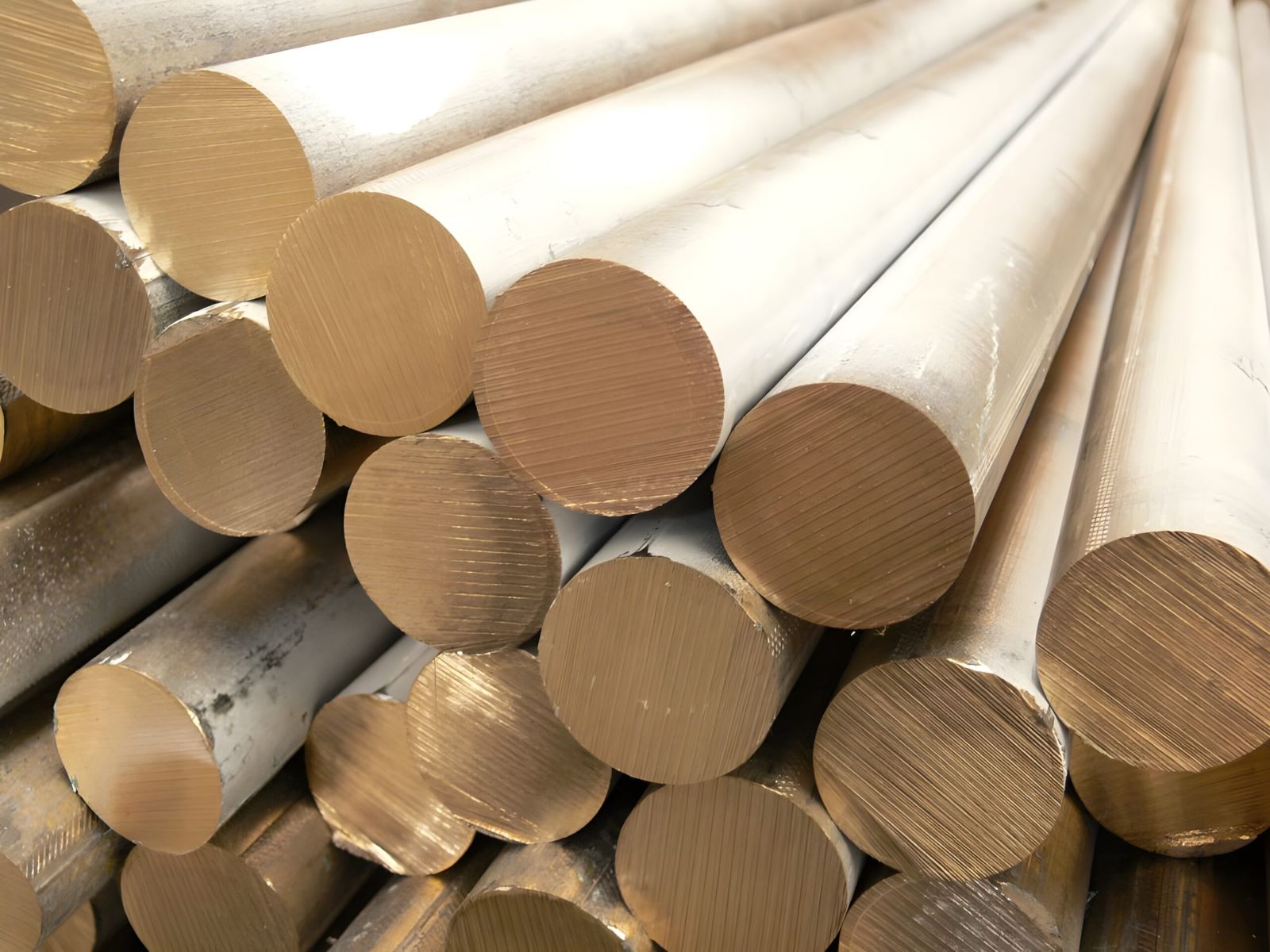
Muntz Metal might not be a household name, but this unique alloy has a fascinating history and a wide range of uses. Created by George Fredrick Muntz in 1832, this brass alloy consists of 60% copper and 40% zinc, with a dash of iron. Muntz Metal is known for its durability and resistance to corrosion, making it perfect for maritime applications, like ship hulls and propellers. It's also used in architecture, plumbing, and even musical instruments. Ever wondered why some old buildings have a golden sheen? That’s often Muntz Metal at work. Dive into these 40 facts to uncover the secrets behind this versatile material.
Key Takeaways:
- Muntz Metal, also known as yellow metal, is a durable and corrosion-resistant alloy made of 60% copper and 40% zinc. It has been used in shipbuilding, architecture, plumbing, and even musical instruments.
- With its bright yellow color and unique properties, Muntz Metal has had a significant impact on history, from reducing costs in shipbuilding to contributing to advancements in the Industrial Revolution. Today, it is used in diverse industries, including automotive, aerospace, renewable energy, art, and jewelry.
What is Muntz Metal?
Muntz Metal, also known as yellow metal, is a type of brass with a unique composition. It was invented by George Fredrick Muntz in the 19th century. This alloy is known for its strength, durability, and corrosion resistance, making it popular in various industries.
-
Composition: Muntz Metal is composed of 60% copper and 40% zinc, with a small amount of iron. This specific blend gives it its unique properties.
-
Invention: George Fredrick Muntz, a British businessman, patented Muntz Metal in 1832. He aimed to create a cheaper alternative to copper sheathing for ship hulls.
-
Color: The alloy has a bright yellow color, similar to gold, which is why it is sometimes called yellow metal.
-
Corrosion Resistance: One of the key features of Muntz Metal is its excellent resistance to corrosion, especially in marine environments.
-
Strength: It is stronger than pure copper, making it suitable for applications requiring durability.
-
Ductility: Muntz Metal is highly ductile, meaning it can be easily shaped and formed without breaking.
Uses of Muntz Metal
Muntz Metal's unique properties make it ideal for a variety of applications. Its strength, corrosion resistance, and ductility are particularly valued in certain industries.
-
Shipbuilding: Originally, Muntz Metal was used for sheathing the hulls of ships to prevent biofouling and corrosion.
-
Architectural Applications: It is often used in architectural elements such as door hardware, railings, and decorative trim due to its attractive appearance.
-
Plumbing: The alloy is used in plumbing fixtures and fittings because of its resistance to corrosion and ease of fabrication.
-
Heat Exchangers: Muntz Metal's thermal conductivity makes it suitable for use in heat exchangers and other thermal applications.
-
Marine Hardware: Its resistance to seawater corrosion makes it ideal for marine hardware like propellers, shafts, and fasteners.
-
Musical Instruments: Some musical instruments, particularly brass instruments, use Muntz Metal for its acoustic properties.
Historical Significance
Muntz Metal has played a significant role in history, particularly in the maritime industry. Its invention marked a turning point in shipbuilding and other industries.
-
HMS Warrior: The HMS Warrior, a British warship launched in 1860, was one of the first ships to use Muntz Metal for hull sheathing.
-
Economic Impact: The use of Muntz Metal in shipbuilding significantly reduced costs compared to using pure copper, making it economically beneficial.
-
Industrial Revolution: The invention of Muntz Metal contributed to advancements during the Industrial Revolution, particularly in the maritime sector.
-
Patent: George Fredrick Muntz's patent for the alloy was a significant milestone in the development of new materials during the 19th century.
-
Global Spread: After its invention, Muntz Metal quickly gained popularity and was used in shipyards around the world.
Modern Applications
While Muntz Metal was initially developed for maritime use, its applications have expanded over time. Today, it is used in various modern industries.
-
Automotive Industry: Some automotive parts, particularly those exposed to harsh environments, are made from Muntz Metal.
-
Aerospace: The aerospace industry uses the alloy for certain components due to its strength and corrosion resistance.
-
Renewable Energy: Muntz Metal is used in renewable energy systems, such as solar panels and wind turbines, for its durability.
-
Art and Sculpture: Artists and sculptors use the alloy for its workability and attractive finish.
-
Jewelry: Some jewelry designers use Muntz Metal for its gold-like appearance and durability.
-
Coinage: Certain coins have been made from Muntz Metal due to its resistance to wear and attractive color.
Interesting Facts
Muntz Metal has some fascinating characteristics and uses that might surprise you. Here are a few interesting tidbits about this versatile alloy.
-
Recyclability: Muntz Metal is highly recyclable, making it an environmentally friendly material.
-
Antimicrobial Properties: The copper content in Muntz Metal gives it natural antimicrobial properties, making it useful in healthcare settings.
-
Thermal Conductivity: The alloy's excellent thermal conductivity makes it ideal for use in heat exchangers and other thermal applications.
-
Electrical Conductivity: While not as conductive as pure copper, Muntz Metal still has good electrical conductivity, making it useful in certain electrical applications.
-
Workability: Muntz Metal can be easily worked with standard metalworking tools, making it a favorite among craftsmen and manufacturers.
-
Historical Artifacts: Many historical artifacts, particularly from the maritime industry, are made from Muntz Metal and can still be found in museums today.
Environmental Impact
Muntz Metal's environmental impact is relatively low compared to other materials. Its recyclability and durability contribute to its sustainability.
-
Longevity: The durability of Muntz Metal means that products made from it have a long lifespan, reducing the need for frequent replacements.
-
Recycling: The alloy is fully recyclable, and recycled Muntz Metal retains its original properties, making it a sustainable choice.
-
Energy Efficiency: The production of Muntz Metal requires less energy compared to some other metals, contributing to its lower environmental impact.
-
Reduced Waste: The workability of Muntz Metal means that there is less waste produced during manufacturing processes.
-
Eco-Friendly Applications: Its use in renewable energy systems, such as solar panels and wind turbines, highlights its role in promoting sustainability.
Fun Facts
Muntz Metal isn't just practical; it has some fun and quirky aspects too. Here are a few fun facts about this interesting alloy.
-
Nicknames: Besides yellow metal, Muntz Metal is sometimes called "patent metal" due to its patented composition.
-
Historical Ships: Some famous historical ships, like the Cutty Sark, used Muntz Metal for their hulls.
-
Artistic Use: Some artists prefer Muntz Metal for its unique color and ease of use in sculptures and installations.
-
Collectibles: Items made from Muntz Metal, such as antique ship fittings, are considered collectibles and can be quite valuable.
-
Unique Sound: Musical instruments made from Muntz Metal have a distinctive sound, appreciated by musicians and collectors alike.
-
Decorative Items: The alloy is sometimes used in decorative items like vases, bowls, and picture frames due to its attractive appearance.
The Final Word on Muntz Metal
Muntz Metal, a unique brass alloy, has a rich history and diverse applications. Known for its durability and corrosion resistance, it’s been used in shipbuilding, architecture, and even musical instruments. This metal, created by George Fredrick Muntz in the 19th century, revolutionized maritime construction, making ships more robust and long-lasting.
Its distinctive golden color and workability make it a favorite among artisans and manufacturers. From the hulls of ships to the strings of pianos, Muntz Metal’s versatility is unmatched. Its ability to withstand harsh environments while maintaining its integrity has cemented its place in various industries.
Understanding the properties and uses of Muntz Metal can help you appreciate its significance in both historical and modern contexts. Whether you’re a history buff, a metal enthusiast, or just curious, Muntz Metal offers a fascinating glimpse into the world of metallurgy.
Frequently Asked Questions
Was this page helpful?
Our commitment to delivering trustworthy and engaging content is at the heart of what we do. Each fact on our site is contributed by real users like you, bringing a wealth of diverse insights and information. To ensure the highest standards of accuracy and reliability, our dedicated editors meticulously review each submission. This process guarantees that the facts we share are not only fascinating but also credible. Trust in our commitment to quality and authenticity as you explore and learn with us.


